December 2007
Monthly Archive
Monthly Archive
Posted by ben on 31 Dec 2007 | Tagged as: art paparazzi, celebrity sightings, responses/reviews

Back in June I noted that Nick Ut had taken the photo of Paris Hilton (above, right) exactly 35 years after the photo of Kim Phuc (above, left), to the day. Today I came across an article in the Telegraph (via Conscientious) which quotes Nick Ut comparing his relationship to the two photos:
It’s a strange feeling because I know I will never take another photograph that’s as good as this – not as long as I live. When I look at my photograph of Kim and my photograph of Paris Hilton, I think they are both good pictures, in their way. I suppose the big difference is that I grew to love Kim, whereas… well, frankly, I don’t give a damn about Paris Hilton.
Not too surprising, really, considering Ut saved Kim Phuc’s life, and to Paris Hilton he’s just another paparazzo. The Telegraph article uses the strange relationship between these two photos to illustrate changes in culture and the role of photography. The premise is that due to both market forces and government regulation, photographers are increasingly pushed towards a minute but distorted documentation of celebrities and away from realistic documentation of international conflicts. More Britney Spears, less Iraq war.
This reminds me a bit of the Nan Goldin exhibit up at the Museum of Fine Arts in Houston right now. There’s a tension in her work between the intimate, gritty realities of chemical and sexual dependency, and stylistic tropes that transform these realities into fantasies. It feels as if she started out as a war photographer, throwing herself into dangerous, chaotic situations and documenting them; but has unwittingly become a servant to the pastime of voyeurism. But I guess the line between truth teller and entertainer has never been terribly clear.
Posted by ben on 28 Dec 2007 | Tagged as: responses/reviews, wordy
A recent post by Edward Winkleman (via Conscientious) responding to an article in The Art Newspaper asks whether artists have a “responsibility to participate in the political debate” through their work. I dealt with this issue back in March, but it’s a complex topic that I’ve had a few more thoughts about since then.
Ed Vaizey’s article in The Art Newspaper asks why we don’t see more artists engaging with political topics from a right-wing viewpoint. Where’s the outrage, he wonders, over the hunting ban (this is a UK newspaper) in the arts community? After all, he figures, contemporary artists tend to be individualists who participate in the market, so why aren’t they more critical of leftists, who tend to restrict individual liberties and free markets? Assuming Vaizey’s characterization of artists as individualistic free marketeers is not a silly stereotype derived from a strange combination of Clement Greenberg’s writings and Sotheby’s press releases, I’m not sure why Vaizey feels that these values would lead artists to care about fox hunting. Unless, of course, he thinks that for anyone to engage in the political debate they have to buy into the expedient left-right dichotomies politicians cram down our throats.
And herein lies the problem. When people talk about an artist’s “responsibility to participate” in political issues, they are asking for engagement in a framework that is both rigid and constantly shifting. What I mean by this is that it is expected that if you support tax cuts, you should support the invasion of Iraq, and if you supported the invasion of Iraq, you should support “enhanced interrogation” (i.e. torture). On the other hand, if you support legalized abortion, then you should support gun control, and if you support gun control, you should support national ID cards. And yet the terms of the debate are constantly shifting; conservatives don’t like big government, unless George Bush wants to expand the Department of Education budget by 50%, or conduct warrantless wiretapping.
So, to come back to Vaizey, if an artist wants to sell artwork on the free market, then why doesn’t that artist oppose hunting bans, and furthermore, show some paintings making that position clear? Participating in the debate means accepting the terms of the debate, rather than critiquing them. Vaizey’s a Conservative politician, but this applies equally to those pushing for artistic activism on the left. Winkleman’s response is a little more reasonable, although I find fault with his implication that the proliferation of more right-leaning art would force those on the left to make political artwork which is more nuanced and universal. If anything, I think it would polarize the art world along the silly, manipulative lines of the political spectrum.
But I think there’s also a much more concrete, practical problem with calls for a more politicized art: timing. To take the local example of Artpace, if there is a fundamental problem with Artpace’s approach to presenting art*, it is that artists have a 3 month residency in which to create their work. It is not unusual for Artpace to bring in top-notch contemporary artists who then produce work that feels rushed, and doesn’t really compare well to their larger body of work. A three month time period is short for most artists; in the world of politics three months is an eternity. Sure, there are certain debates that have been raging for decades (such as abortion in the US), but even these debates often shift in subtle ways — we might be dealing with parental consent at one point and partial birth abortion procedures at another.
I think in many ways it is the structure of the art world that makes this kind of activist art almost impossible to pull off with any kind of effectiveness. But that structure was set up for a reason: it allows artists to deal with contemplative, complex ideas and to present unique, engaging visual experiences. The relatively slow pace of an individual exhibition means that artists working within this structure cannot engage in a rapid-fire rhetorical exchange with political pundits. Because they can’t do this, they have no hope of engaging in effective activism, unless they work outside of the gallery / museum structure. Of course artists can still raise larger political questions about war, surveillance, societal structures, and so on, but this becomes a more abstracted conversation which rises above the political minutia that pundits thrive on, so it becomes disengaged from the “political debate” of the moment.
* I say “if there’s a problem” because I think Artpace’s residency approach has many benefits, which may very well outweigh this defect, which in any case is by no means always apparent.
Posted by ben on 24 Dec 2007 | Tagged as: responses/reviews, wordy
In yesterday’s New York Times, Roberta Smith finds a strange bone to pick with the art world’s use of the word practice (as in, “I’m getting an MFA to take my practice to the next level”). Her entire critique seems to stem from the equation of this use of the term with the usage of doctors and lawyers, which, for her, “turns the artist into an utterly conventional authority figure.” That Smith would choose this particular word to harp on is baffling to me, considering all the superfluous, obtuse language thrown about in art-critical circles. But it is the form her critique takes that really bothers me.
There are a lot of preconceptions and implications to unpack here, and Andrew Berardini at The Expanded Field has already written a fairly long response to the piece. I’ll start by noting that Smith doesn’t introduce any kind of etymological arguments in her article, and she might be jumping the gun by assuming that when artists talk about their practice it is equivalent to a dentist talking about his practice. As one of The Expanded Fields’ readers points out, it is common for Zen Buddhists to talk about their spiritual practice (which often includes artistic pursuits). Smith does introduce the notion that artists could be using this term because it emphasizes routine over revelation. Berardini’s defense of the usage falls along similar lines; he points out the liberating effects of valuing the process of making art over the product. And this is exactly the point of the Buddhist usage: you don’t have a static faith, you are engaged in an evolving practice.
An important implication of Smith’s frustration with practice is that it points to a desire to ignore the value of craft in an artist’s work. She doesn’t want the artist to be an authority on how to make objects with certain materials; she wants the artist to “operate outside accepted limits”; to constantly innovate. She wants artists to be messy, rather than to know what they are doing. That’s all well and good, artists should take more risks than doctors, but it is often the process of developing a craft that leads to important artistic breakthroughs. As Tyler Green pointed out recently, Matisse worked very conservatively in his early painting, and indeed it is rare to find innovative artists who didn’t initially work in timid ways. It is Marek Cecula’s very knowledge of commercial ceramic production that allows him to subvert the process as an artist.
It would be interesting to learn when practice began to be used in the way that riles up Roberta Smith so much, and what motivated those who drove the change. To me it seems much more likely that the common understanding of practice in the art world derives from the Buddhist usage (or something similar) than from the usage of the white collar professional community. Even if this etymology were resolved, we would still have the question of whether using practice in this way makes those outside the art community associate artists with lawyers, but this will have more to do with how artists go about doing their work, than the word they use to signify it.
Posted by ben on 20 Dec 2007 | Tagged as: arts organizations, comics, graffiti, responses/reviews
I feel bad for Alex Rubio. A month after his residency at Artpace ended, he had to put together a whole new exhibition of work for Museo Alameda. And although he pulled it off, the differences between the shows are revealing. Both exhibits are based around the idea of community; at Artpace, Rubio orchestrated an installation that combined the talents of local artists ranging from graffiti artist Shek to metal sculptor Luis Guerrero to neon and glass artist Cathy Cunningham; the Alameda mounted a two-person show by Rubio and his former student Vincent Valdez, which emphasized their shared history in San Anto (Rubio on the west side, Valdez on the south side). The Alameda show also brought in some community artists to accentuate the work with neon and sculpture, but remained primarily a showcase of the two artists’ paintings.
Let me start off by saying that both shows were successful, and anyone who hasn’t seen them yet should make the effort to drop by Artpace and the Alameda before they go down (the Artpace show runs through January 6, while the Alameda show closes March 23). At Artpace, Rubio orchestrated an installation that seamlessly blends the talents of a wide range of artists into a work that fits right into Rubio’s oeuvre. Organizing a community of artists around a singular vision is no easy task, and Alex Rubio pulled it off.
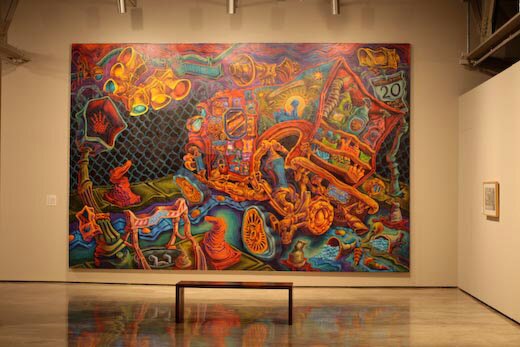
The Museo Alameda’s exhibit, curated by Benito Huerta, has a different goal: to juxtapose the work of two San Antonio artists with common yet divergent paths. The reason this show works is that the cinematic drama of Vincent Valdez’s work provides an effective counterpoint to the twisted, psychedelic visions of Alex Rubio. Both artists embrace the gritty reality of the streets in their native barrios, and bring into full view both the pride and the laments of their cultural heritage. Yet the divergent means through which they approach these realities tinges the community they depict with two distinct flavors. Valdez’s aesthetic could be drawn from the films of Scorsese, with their visceral impact and complex, yet direct, realism. At the same time, Valdez weaves a contemporary symbolism into his work, imbuing it with a sense of cultural depth. Rubio, on the other hand, seems to owe more to the psychedelic exploration of underground comics or even rock concert posters, while bringing this stylistic vocabulary to a new level of complexity and vibrant energy.
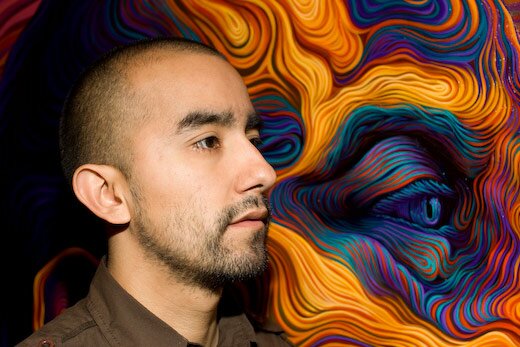
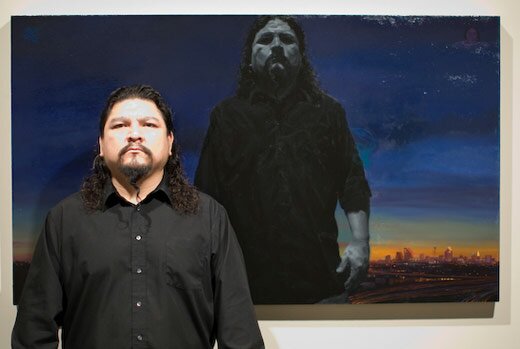
But when your eye drifts from the paintings, the rough edges start to become apparent. A huge map of San Antonio reminiscent of a pirate treasure map is prominently installed in the exhibit, highlighting the artists’ neighborhoods and showing the locations of significant events in their lives. Besides being difficult to read, this map, when at long last it is deciphered, brings very little to the paintings, which clearly convey a coherent experience of the world. Neon hands designed by Valdez forming the “signs” for the North, South, East and West sides feel tacked on; and a sculpture of the boxer in Valdez’s paintings lacks the emotional depth and formal strength of the original.
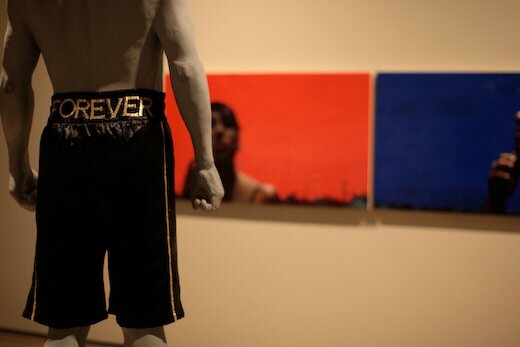
Still, this show is about the paintings, and the paintings succeed.
Posted by ben on 14 Dec 2007 | Tagged as: books, essays, vs., wordy
“Prosaically, lunk-literal-mindedly, I’ve wondered to what extent Pollock was being subliminally influenced by the color images of telescopic deep space suddenly proliferating in all the popularizing magazines and books and movies of the period. And, too, I’ve wondered about the human scale — the place of the human in the unfolding drama. Standing before such paintings, I can get to feeling positively infinitesimal (less than minuscule, a merest speck, utterly, in Greenberg’s phrase, “beside the point”); or, alternatively, as my eyes sweep the canvas and my mind identifies, momentarily, with the glory of the painting’s making, I can get to feeling almost godlike. One is reminded of the various self-dramatizing films of Pollock around the time he was making those paintings — a Colossus striding purposefully from side to side, pausing, stabbing, hurling the universe itself into existence.” — Lawrence Weschler,
“Henceforth, when man is for once overcome by the horror of alienation and the world fills him with anxiety, he looks up (right or left, as the case may be) and sees a picture. Then he sees that the I is contained in the world, and that there really is no I, and thus the world cannot harm the I, and he calms down; or he sees that the world is contained in the I and that there really is no world, and thus the world cannot harm the I, and he calms down. And when man is overcome again by the horror of alienation and the I fills him with anxiety, he looks up and sees a picture; and whichever he sees, it does not matter, either the empty I is stuffed full of world or it is submerged in the flood of the world, and he calms down.
“But the moment will come, and it is near, when man, overcome by horror, looks up and in a flash sees both pictures at once. And he is seized by a deeper horror.” — Martin Buber,
Posted by ben on 13 Dec 2007 | Tagged as: comics, video/film
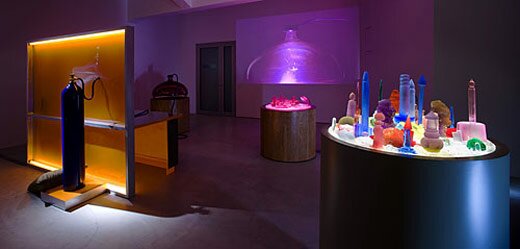
Check out some great images (and video) of Mike Kelley’s new installation at Jablonka Galerie, which deals with the representation of Superman’s home town, Kandor, in the DC comic books. This press release explains the show more fully.
Posted by ben on 10 Dec 2007 | Tagged as: adventure day, announcements, upcoming events
To celebrate Emvergeoning’s first birthday, we will be meeting at the Tower Bar at 8 pm Monday evening. All our readers are invited to join us. We have arranged to have the first $100 worth of drinks covered. Once the altitude starts making us dizzy, we’re heading over to Tucker’s for a night cap. Hope to see you there!
Posted by ben on 08 Dec 2007 | Tagged as: essays, music, r.i.p., responses/reviews, sound art
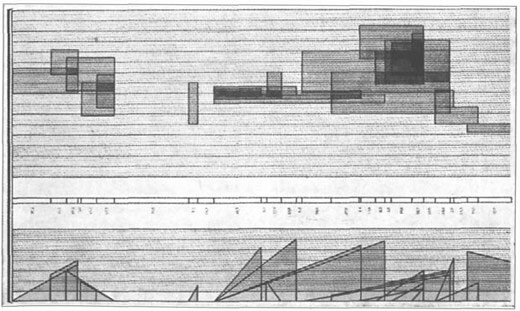
On the news of Stockhausen’s death, it may be worth reading this long essay on his work, which is still often misunderstood. This brief quote encapsulates some of the main ideas of the essay (by Jean-Claude Eloy):
The splendid success of the overall conception, general organization and production of “Zyklus” still do not always allow for the percussions to truly express their life and demonstrate all of their rich potential. On this matter, a work such as “Mikrophonie I” opens up surprising vistas and breaks down all barriers. The rich, but single, source for the whole work (the large tam-tam) is allowed ample time to “share” its multiple metamorphoses of tones, attacks, and resonances. Once again, with such a work, Stockhausen has shown himself to be a frontrunner, the boldest of all.
Throughout his work, Stockhausen’s dialectical personality is express by this double thrust, one rotating, the other ascending. One the one hand, he is truly audacious in his conceptual work and he knows how to impose a (sometimes “abstract”) form of thinking on musical material. And on the other hand, he possesses a very open sensitivity that studies material, listens to sounds created in the studio, analyzes their hidden pulsations, all to extract new meaning, go a step further and push the material forward.
Stockhausen’s double success in the two worlds of instrumental and vocal music – sound material that is already laden with history and acquired habits – as in the new realm of exploration of electro-acoustic technologies (a unique case in our times), can be understood by the presence of this dialectic that is constantly criss-crossing and circulating between two poles: from conception to material and from material to conception. Although ostensibly contradictory, these two poles are, in fact, complementary.
[Image above is a page from the score of Stockhausen's 1954 composition Studie II]
UPDATE: I decided to upload an MP3 of Stockhausen’s groundbreaking 1956 composition, Gesang der Junglinge. You can read more about this piece here. Enjoy.
Posted by justin on 08 Dec 2007 | Tagged as: adventure day, silliness, sneak peeks, upcoming events

Shameless self promotion? possible. This is for the opening of our show at FL!GHT Gallery tonite on South Flores. Over 40 artists have brought new and old work to be sneezed out of our “Dry Goods” room. The image you see is of the halfway completed hanging..just a taste of what you’ll see tonite.
Posted by ben on 06 Dec 2007 | Tagged as: borders, interviews, responses/reviews

This 1993 article / interview from Art in America about Richard Prince’s use of images of women deals with some important issues, including perception, appropriation, and feminism.
BW: You’re talking about the humor of the jokes, but a lot of them are incredibly hostile as well.
RP: Yeah. The comedians that I’ve met are certainly not the happiest people in the world. But that’s not really what I’m about, this kind of hostility or anger or tragedy. l’m mostly thinking in a very boring way. It’s really about going into the studio every day and working, so many of my concerns are really formal, straight-out, boring problem solving.
BW: I guess what I’m leading up to is that a lot of women think that your anger is directed at women.
RP: I like women. I have no problem with women. I’ve heard this and it upsets me to a point, but actually I think it’s a rumor. I know lots of women who like my work and understand it. I think that’s a generalization. There’s nothing directed against women.
BW: Maybe you could talk about another series that enraged a lot of women: the so-called biker chicks.
RP: Well, as far as the biker chicks are concerned, I just wouldn’t mind being one. I’ve never said that before, but I think that’s what I really feel. There’s a certain kind of desire and a certain amount of passion. I like what I think they look like, or perhaps what they are. I think many of these pictures have their own egos and they have an imagination of their own. That’s my own particular reaction. I also think the biker chick is perhaps a more realistic representation than the Grace Kelly girl-next-door. I mean, the biker chicks are the girls next door. The title of the series, “Girlfriends,” is a nonfiction title; those girls are girlfriends. The pictures are taken by their boyfriends and published in a magazine. It’s not like a cult or anything. There are four or five of these large-scale, mass-market publications. Maybe I like women like that.
Posted by ben on 06 Dec 2007 | Tagged as: arts organizations, responses/reviews
Joe Solis’ recent article in the Current critiquing the Museo Alameda has a number of problems, although I agree with the general sentiment that the Museo needs to improve its curatorial work and engage with a broader spectrum of San Antonio’s Latino (and non-Latino) community. Two recent developments give me hope that the Museo leadership is starting to realize the importance of these goals.
First, the initiation of a “free day” (with outside funding) will encourage the lower-income segments of the community to explore what the Museo has to offer. Oddly, Solis takes umbrage at this free admission day, calling it a “bribe”. He cites the popularity of other local museums to show that the Alameda doesn’t need to allow free admission — but he completely ignores the fact that two of the three museums he cites also have “free days”, and that it is a standard practice in the museum industry. He’s right that this isn’t going to solve all the museums outreach problems, but it is certainly a step in the right direction.
On the curatorial end of things, the Museo has finally put together a show I’m genuinely interested in seeing. Alex Rubio and Vincent Valdez, two well-respected local artists, will be sharing the museum for an exhibition called “Pride of the Southside: En el Mero Hueso”. This show should certainly bring out the art community in droves (Rubio’s recent show at Artpace was packed), and should also be the kind of work that a broader audience can connect with. It should even entice those people alienated by recent Alameda shows that politicized Day of the Dead and anglicized the huipil. Solis doesn’t even mention this exhibit, which opens next week, in his article.
Again, any real solution to the lack of outreach and weak programming will have to involve deeper changes in the Museo, but I’m seeing some encouraging developments at “the pink lady on Commerce” (as Solis calls it), which I hope are indicative of a more meaningful long-term strategy and a shift in the administrative culture (this will be the key).
P.S. Note to Joe Solis — the Museo Alameda is not a “division of the Smithsonian Museum”, not by a long shot. The Museo Alameda is a Smithsonian Affiliate, along with many other museums around the country. The Current should run a correction.
UPDATE: I just learned that the Museo Alameda pulled an ad from the Current due to Solis’ article. The ad was for the upcoming Alex Rubio / Vincent Valdez exhibit. If the leadership at the Museo thinks this is the best way to address criticism from the media, then it is clearly working against the organization’s own stated mission. The Museo was apparently built to encourage dialogue between cultures, but as soon as a discussion about the efficacy of the organization begins, the folks at the Alameda try to shut it down. Solis rightly identified a deficit in the Museo’s outreach efforts; in response they damage that very outreach effort in an act of petty retaliation. This mindset, if it continues, is going to doom the museum and ultimately damage the community it is apparently trying to enrich. This isn’t about whose “team” we’re on; it’s about working together as a community towards mutual understanding and respect. If the Alameda wants to shut down dialogue, then they do so at their own risk. Currently the conventional wisdom in the arts community is decidedly critical of the museum; even if the Museo is able to blackmail every media source into silence, that won’t change a thing.
UPDATE 2: The Current has also covered the Alameda in the context of their city funding, and Chairman Henry Muñoz’s involvement with the city-funded Luminaria arts night. This is, I think, a more sensible and well-researched piece. It also has a fabulous photo of Muñoz.
Posted by michelle on 05 Dec 2007 | Tagged as: announcements
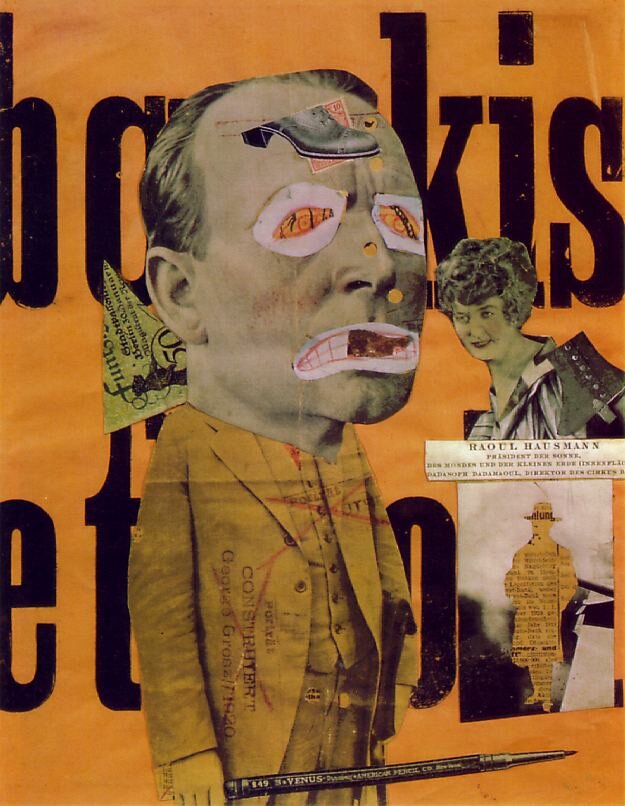
With the new year drawing nigh, Salon Mijangos is working on a new schedule of art classes. For those of you that don’t remember, Alberto Mijangos founded the small art school in order to cultivate a lively, local community on South Flores St.
His daughter, Laura Mijangos, will keep the school open and plans on adding several new classes. I’d like to invite anyone interested in Dadaist collage and assemblage to sign up for a class that I will be teaching next semester. We will study the works of Hannah Hoch, Raoul Hausmann and Kurt Schwitters. Visit the home base of Salon Mijangos for details on class schedules and instructors. The image above is Haumann’s “The Art Critic.”
In other news, Dee Mitchell finally convinced Art in America to publish his Report from Austin. This month’s issue gives a tip of the hat to the hot Austin art scene, but it doesn’t necessarily give any glowing reviews. Mitchell says the Texas Biennial needs a theme and points out the crazy idea that art kids actually stay in Austin after they finish undergrad. He writes thoroughly about the brief history of some Austin institutions like Laguna Gloria and the Blanton, but gives a stilted example of the art that’s thriving in Austin. To be fair, that is also the downside of print media with limited space to run a few photos. Write a blog, Dee!!!
Triangle Project Space currently houses one of the best curated shows of the year with works by a majority of Mexican artists as well as a few celebrities like Bruce Nauman and Erwin Wurm [is he a celebrity for the fat car? maybe not...] I could write more, however, this is work that should be seen and not read.
Our fellow blogger/webbie, Neoaztlan, will have a party at Salon Mijangos on Friday, so don’t miss it! Also, since it is the giving season, don’t forget Emvergeoning’s First Birthday on December 10th. We’re still deliberating on what to do about this auspicious day…Any suggestions?
Over and out.
Posted by justin on 05 Dec 2007 | Tagged as: art paparazzi, in yo face, possibilities, rumors, sneak peeks

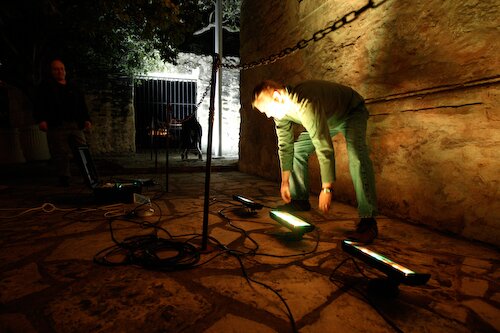
Bill Fitzgibbons (not pictured above) was seen directing the prologue to a rumored Luminaria Arts Night installation today at nightfall.
Posted by ben on 04 Dec 2007 | Tagged as: design
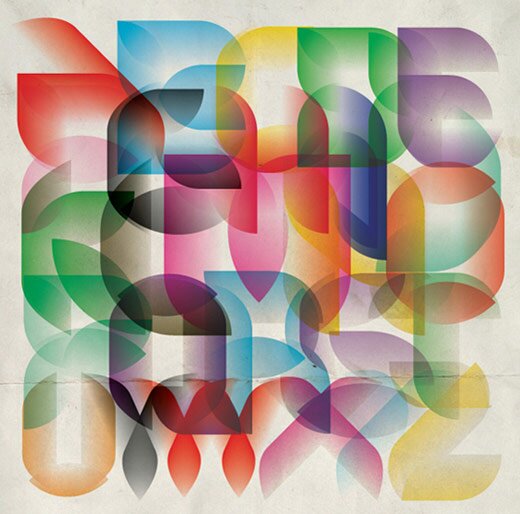
Armin at Speak Up gives us the 2007 typographic design trends round up (via Design Observer). Apparently legibility is out, along with counters (I blame the street artists). Image shown here is from a poster by Andrei Robu.